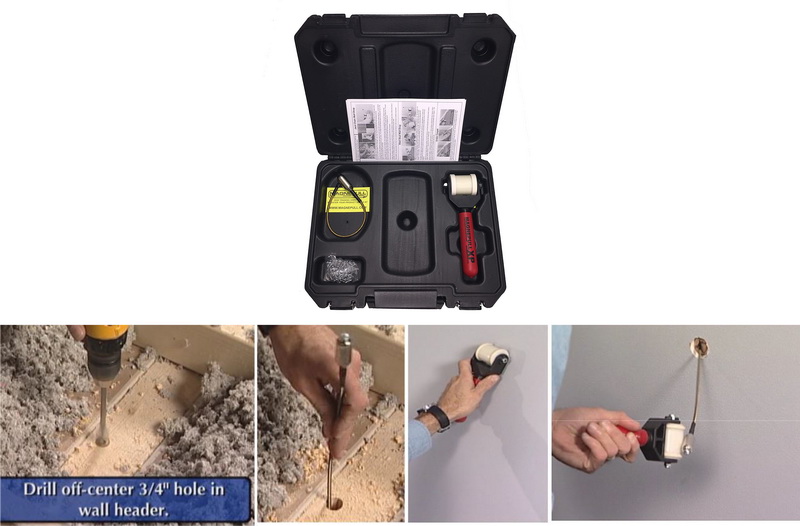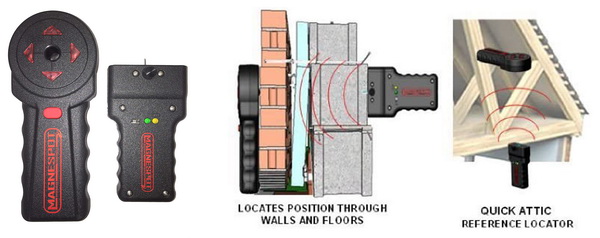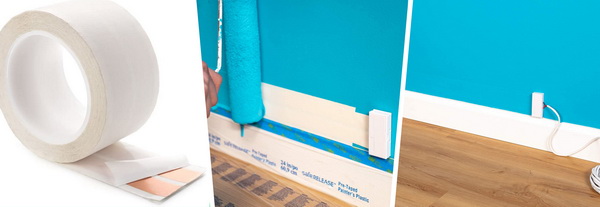AudioReputation is reader-supported. When you buy through links on our site, we may earn an affiliate commission Learn More
Once you experience surround sound there’s little-to-no chance of settling for less. It’s the kind of immersion you could never get from your TV speakers or from a pair of active bookshelf speakers. There’s no doubt that surround sound systems bring your movie-watching experience to another level but finding the right one and installing it can be a real nightmare, especially if you are going for a large system with wall-mounted or in-wall/in-ceiling speakers. For the purposes of our article, we will assume that you already have the speaker system and the receiver and you ‘’just’’ have to install it and hide the speaker wire.
We will present you with different solutions for hiding the speaker wire. Some solutions are simple and very cheap, other solutions are more complicated but don’t require a lot of money, and some solutions are both – complicated and require additional investments. One thing you must have in mind is that not all the solutions are equally effective and elegant. Perfectly clean solutions will, naturally, require more time and some advanced equipment.
Recommended Reading : Ways to Connect Your Soundbar to Your TV
The first thing you have to ask yourself is – do I want the speaker wire completely out of sight or do I just want it out of the way? This is a crucial thing that determines your further course of action.
Table of Contents
Out of Sight and Out of The Way
Let’s start with the most difficult, most time-consuming, and most expensive solutions. These solutions will allow you to get rid of the speaker wire and move it out of sight and out of the way.
Solution 1 – Run the wires through walls (can be expensive and it’s very time-consuming)
If you’re using passive speakers, this is, by far, the most elegant and cleanest possible solution. However, it also requires a lot of time, patience, attention to detail, some craftsmanship, and of course, some tools. Depending on the tools you use, this solution may also require some serious investments. In case you’re not very handy with tools or if you’re impatient, it’s probably smarter to pay a professional installer and avoid destroying your home.
First of all, some basic info. The distance between two studs in a home is usually 16 inches. In some cases, it’s 24 inches. Why do you need to know this? Because you don’t want to cut through studs.
What you want to do is to drill a hole between two studs, somewhere behind your TV cabinet, as well as holes on the opposite walls or wherever you want to install your speakers. Then, you want to run all the speaker wire from the attic down to that hole behind the TV cabinet (you should route it between the studs) and the other end goes across the attic and down the wall (again between the studs) to the holes you already drilled for surround or rear surround speakers.
Recommended Reading : What is the Best Speaker for TV?
It sounds simple but it’s NOT. It’s anything but simple. There’s a number of problems you may encounter while trying to route the speaker wire through walls. The best-case scenario – walls without insulation and without fire blocks. If there’s no insulation and no fire blocks, there’re no obstacles preventing the speaker wire from going straight down.
The existence of some sort of insulation makes the installation harder. However, it’s not the end of the world and it’s still doable – you just need the right tools.
The worst-case scenario is the existence of fire blocks. Fire blocks are a real nightmare, even for professional installers. Ironically, fire blocks are very important for your home and every house should have them. Their purpose is to prevent the fire from spreading inside the walls by cutting off the oxygen supply. If you’re not a serious DIYer and your home has fire blocks, DO NOT mess with these things – just hire a professional. It will cost you more but your home will still be safe for living.
Now that we have covered wire routing, let’s talk about the tools. Having the right tools can make the whole process of wire fishing (which is the most difficult thing about the installation) much easier and can reduce the installation time significantly.
First of all, you need basic tools like wire strippers, scissors, utility knife, bubble level, staple gun, drill (preferably cordless), ruler, hammer, drywall saw. And of course – you need speaker wire.
Second, you need some kind of stud finder. This tool does exactly what the name implies – it helps you locate the studs through walls. The price of stud finders varies from $25 to $300. You can find a pretty good stud finder for less than $100 or even less than $50.

Bosch GMS-120 stud finder
For wire routing, you will also need some kind of tool. The cheapest and simplest tool for wire routing is a fish rod or a fish tape. Depending on the quality, the price of a fish rod varies from $20 to $100 or $200.
How to use fish rods
In case you have to run the wire through insulation, fish rods may not be the best solution since they are much harder to pull out. In this case, tools like Magnepull can come in handy. This tool is priced around $150, which could be a bit too much for some people. Magnepull is basically a set of two magnets. You connect the cable to one magnet and start routing it downwards. Then, use the other roller magnet to route it to the wall outlet.

Magnepull XP1000-LC – perfect for routing wire through insulation
If you don’t know where to drill a hole in the attic, you could try using the Magnespot tool.

Magnespot XR1000-K2
Once you’re done with the wiring, don’t forget to patch the walls or install wall outlets and make everything look clean. Leaving the holes gaping is simply unprofessional and ruins the room aesthetics just as much as the speaker wire.
Solution 2 – Go wireless (expensive but very convenient)
In case you don’t have the speakers or the receiver and you’re still considering your options, you may want to consider buying a wireless surround sound system. They are a convenient solution that doesn’t require any speaker wire. However, wireless surround sound systems cost more than regular systems.
Recommended Reading : How can I Improve my TV Sound for Hearing Impaired?
Even if you already have wired speakers, you could use some sort of a wireless kit for the subwoofer and surround speakers. That way, you won’t have to run the wire from your receiver to the subwoofer and surround speakers. What you must have in mind is that most of these wireless kits are all designed for powered speakers and subwoofers.

SVS SoundPath wireless kit for subwoofers and powered surround speakers
Out of the Way (But Not Out of Sight)
If you don’t mind seeing the speaker wire but want it out of the way, you could try some of the following solutions. Not all these solutions are very elegant, but they will all prevent you from tripping over the wires.
Solutions 3-6 – Don’t make the wire disappear but move it out of the way
The two most elegant solutions are cable channels (cable raceways) and flat adhesive speaker wire. You can install the cable raceways along the walls, right over your baseboard, and maybe even paint them to match the color of the baseboard. Then, you run the speaker wires through the raceways all the way to your speakers.

Cable raceways are a clean and affordable solution
Flat adhesive speaker wire, like the Ghost wire made by Sewell Direct, is also a great solution. You can stick this wire to the walls, floors, or ceiling, and you can even paint over it and make it virtually invisible. If it’s on the floor, you can just cover it with a rug or carpet. For this wire, you will also need special termination blocks to connect it to your AV receiver and to your speakers.

Ghost wire can be virtually invisible
Another elegant solution would be to buy hollow crown molding or baseboard molding, Or even chair-rail molding. During the installation, you just have to run the speaker wire through these moldings. In some cases, you may have to use cable raceways in combination with moldings, especially if you want to hide the speaker wire completely.
Recommended Reading : What Kind of Wireless Headphones Work with TV?
Another option, in case you have LED light strips, is to run the speaker wire along these strips. You can use the cable clips to attach the wire firmly and prevent it from moving. Even if you don’t have LED strips, you can use clips with nails and affix the speaker wire to the baseboard. These two solutions are not very elegant but will make your room look at least a little bit cleaner.

Cable clips with nails are not the best but are an effective and cheap solution
Finally, if you have a bunch of posters, paintings, and artwork on your wall, you can try hiding the speaker wire behind these posters and paintings. This is probably the worst possible solution and doesn’t look very clean but you won’t be tripping over the speaker wire anymore.
So, there you have it. Now you know multiple ways to hide speaker wire for surround sound and you just have to choose the right solution for your surround system. Feel free to share your experience or ask questions in the comments below.

Hello, my name is James Longman.
I’m a writer and editor at AudioReputation. I disassembled my first portable AM/FM radio when I was only 8. At the age of 11, I burned the circuit board on my old boombox cassette player. I’m not going to explain how but it was reckless and stupid.
Since then, I have become much more careful around radios, boomboxes, and other audio devices (at least, I like to think so) but I have never lost the passion for audio equipment. Throughout 20 years of my professional career, I’ve been working for various audio equipment manufacturers and even started building speakers on my own in my little workshop.
I love the work we do here at AudioReputation. Testing, comparing, and evaluating all kinds of audio devices (speakers, soundbars, headphones, home theater systems, etc.) is something I truly enjoy. I try to be unbiased and give you my honest opinion on every piece of equipment I test. Still, you should take my reviews with a pinch of salt and always be just a little bit skeptical. The fact that I liked some speaker or soundbar doesn’t mean that you are going to love it. If you have the opportunity, you should test it/hear it before buying it.

